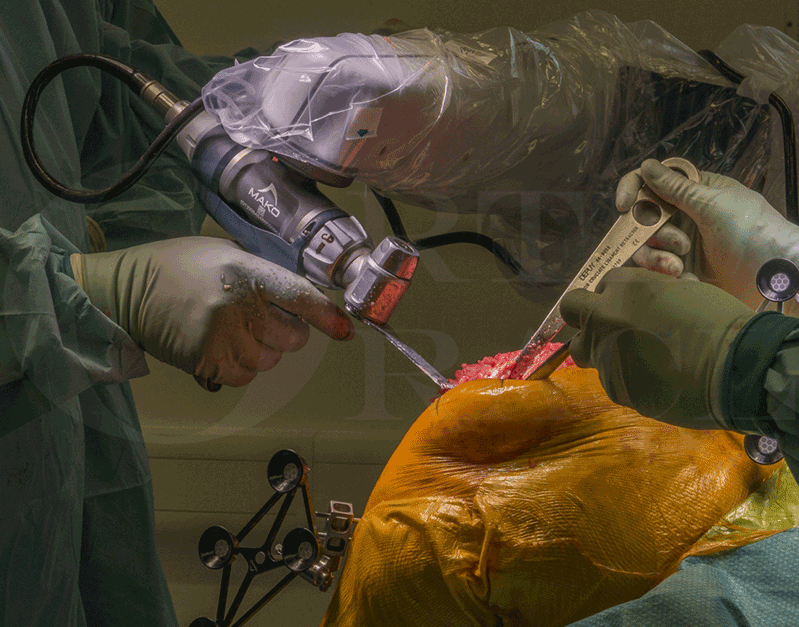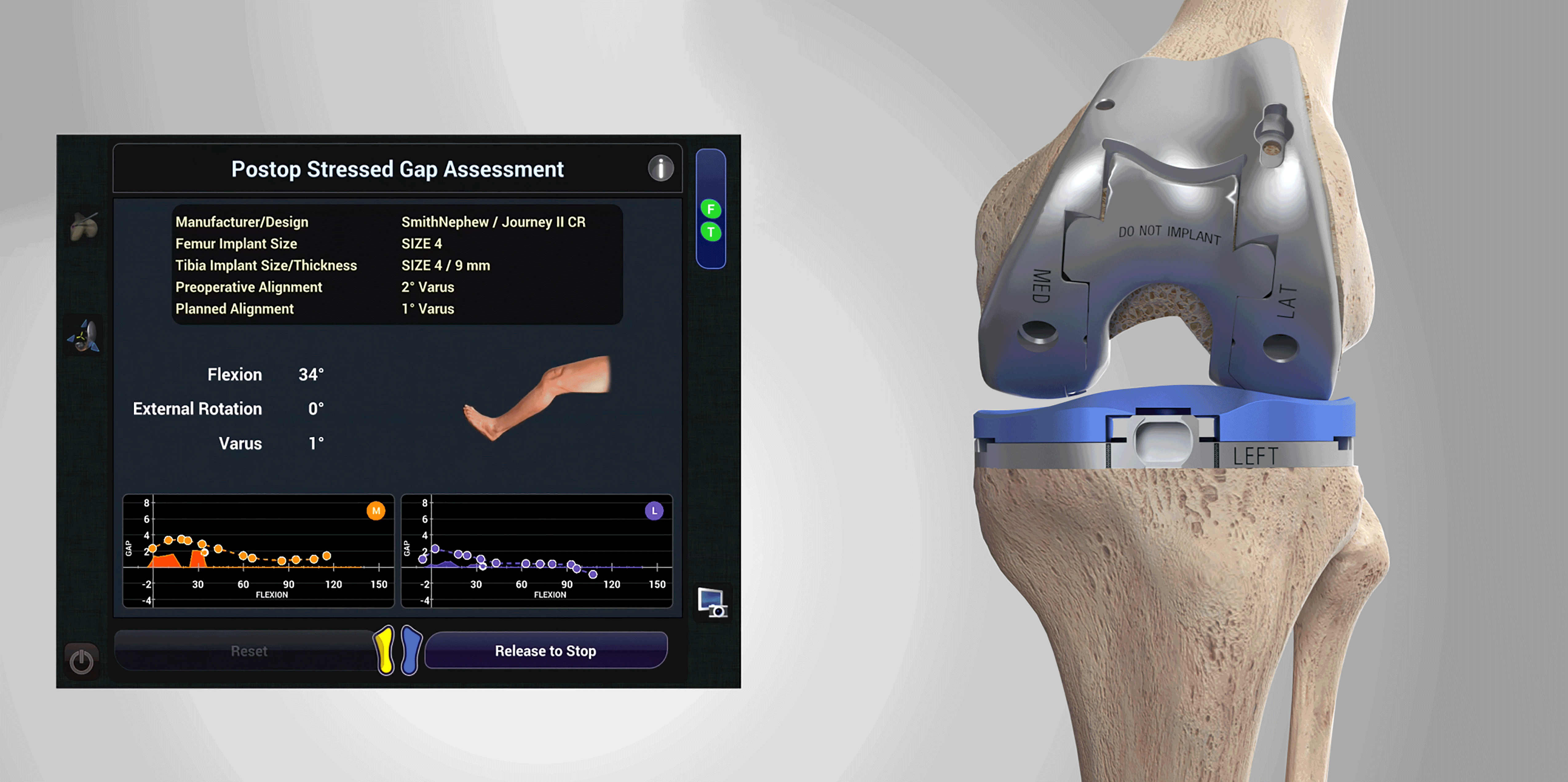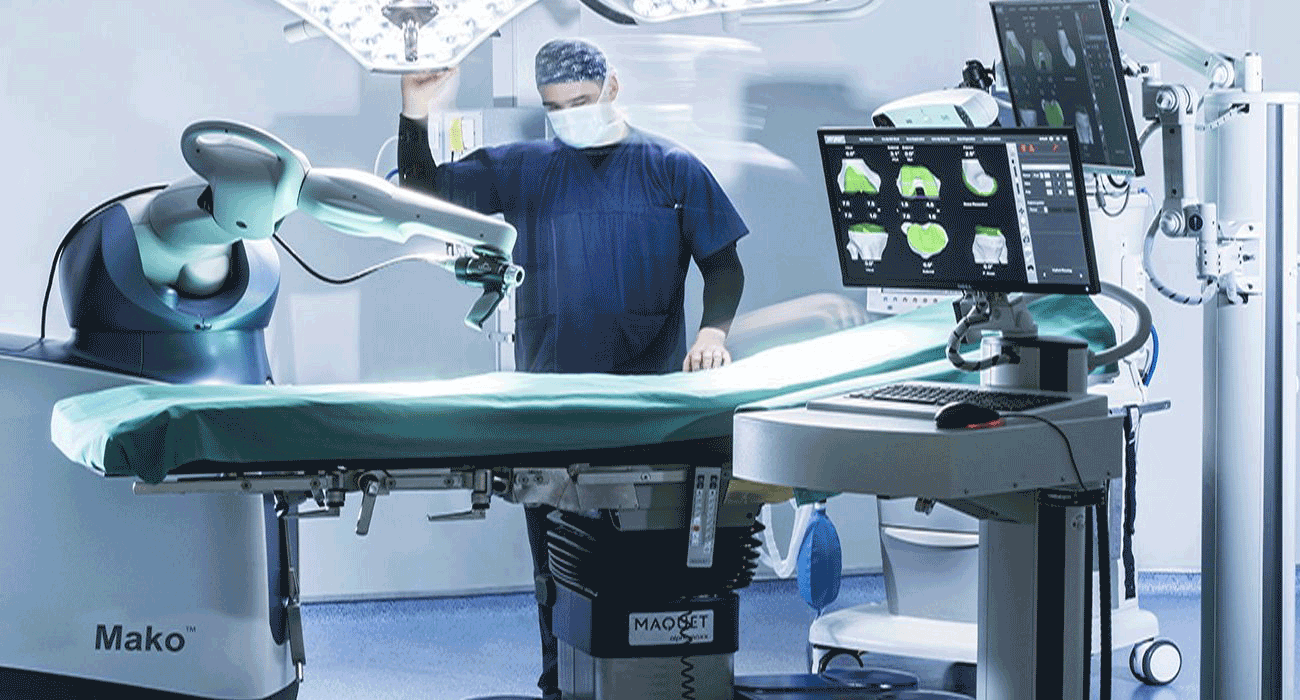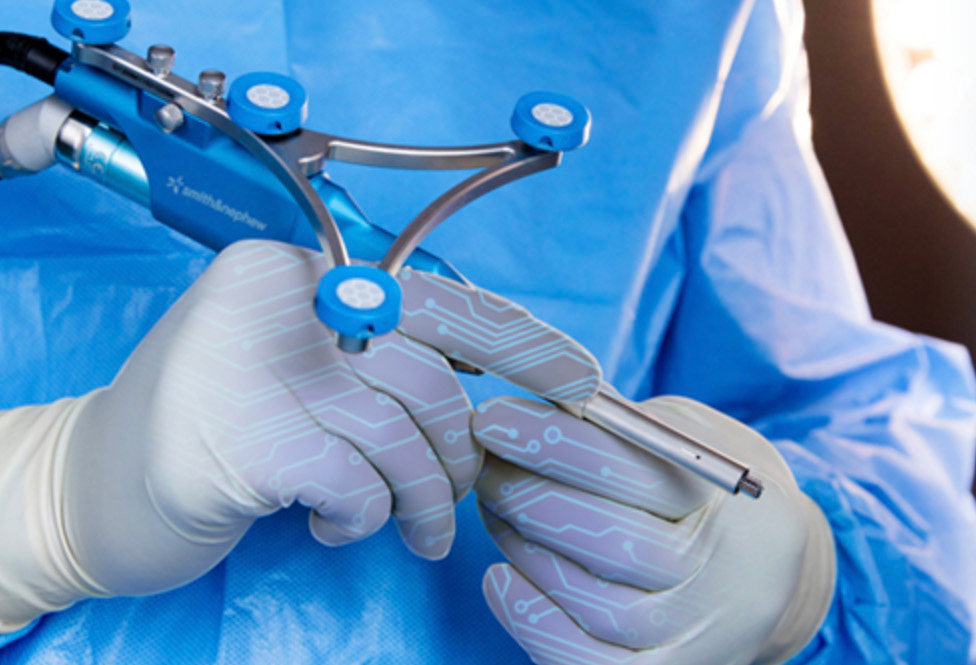Osteoarthritis occurs when there is a breakdown of the cushioning cartilage in the knee. Bones begin to rub against each other causing pain, swelling and stiffness affecting routine daily activities. While there is no cure for osteoarthritis, there are multiple treatment options to manage pain ad potentially delay disease progression. These include exercises, weight loss, aces and/or medication. If osteoarthritis progresses to an advanced stage and iscausing severe pain, surgery including partial or total knee replacement may be he best option. If surgery happens to be the best recourse, you should be happy to know that we always use the latest technology for our patients. The NAVIO-CORI Robotic Surgery platform (Smith & Nephew, UK) is one of the foremost healthcare innovations of this century and we strongly believe that THIS IS THE FUTURE of Knee Surgery. Robotic Knee Replacements have the potential to RECOVER FASTER, FEEL BETTER and LAST LONGER.

Partial Knee Replacement, where only the diseased part of the knee is resurfaced (replaced), can benefit patients with early to mid-stage osteoarthritis. Total Knee Replacement, where the entire knee joint is resurfaced, is generally reserved for advanced osteoarthritis affecting multiple compartments of the knee.
A knee replacement consists of 3 basic steps:

Think of a pilot negotiating a plane through a thunderstorm. A few decades ago, gut instincts would matter most. Today, the pilot has high quality satellite navigation (GPS) to rely on, think ‘autopilot’. No sudden drops, no emergency landings, in fact even turbulence is managed well! On similar lines, an ortopaedic surgeon doing conventional knee replacements eyeballs most parts othe surgery. The same surgeon, with robotics assistance, can get a greathree dimensional view of the knee and can plan near perfect sizing and placement of replacement components. Each time. Every time.
Robotics-assisted Replacement surgery is an advancement in the way orthopaedic surgeons perform Knee Replacements. Robotic assistance is provided by NAVIO-CORI (Smith+Nephew, UK), an advanced computer program (on a console) that relays precise, real-time information to a surgeon held device. Every procedure has an individualized plan based on each patent's unique anatomy.
In simple words, Dr. Sheth first maps the unique shape of your arthritic knee with a special pencil tool. A 3D mock-up of the native knee is then generated, on which the computer tries to custom fit and size implants (replacement components). Once this plan is approved by Dr. Sheth, the resurfacing is executed with a special robotics-assisted handpiece that works within pre-defined boundaries, minimizing tissue damage and eliminating human errors.

At The Knee Clinic, we offer robotic knee replacement surgery as part of our commitment to providing our patients with the most advanced and effective treatment options for knee arthritis and other debilitating conditions Robotic knee replacement surgery is a state-of-the-art procedure that utilizes advanced robotic technology to enhance the precision and accuracy of knee implant placement. This innovative approach offers several benefits, including:
Robotic systems generate a personalized 3D model of the patient's knee anatomy, allowing surgeons to create a customized surgical plan tailored to the patient's unique anatomy.
Robotic-assisted tools provide real-time feedback to the surgeon, allowing for precise bone preparation and implant positioning during surgery, which can result in improved alignment and longevity of the implant.
Despite its precision, robotic knee replacement surgery is minimally invasive, resulting in smaller incisions, reduced blood loss, and faster recovery times compared to traditional knee replacement surgery.
With its ability to achieve precise implant placement and alignment, robotic knee replacement surgery may lead to improved functional outcomes, reduced risk of complications, and faster return to normal activities for patients.
CORI is a robotics-assisted knee surgery platform that adds an extra layer of pre-surgical planning and improved accuracy for partial and total knee replacement procedures. Your knee replacement surgery thus becomes unique, based on your knee anatomy and the implant used. CORI is designed to help ensure your knee replacement is positioned and aligned correctly as that is a crucial factor in determining how long your implant may last

Surgical techniques have evolved considerably since the earliest knee implant procedures were performed in 1968. These procedures relied on manual guides, external pins and cutting jigs to remove damaged bone and place the prosthetic implant.
Eventually more advanced implant positioning techniques were introduced that used long rods drilled into the central canal of the femur (thigh bone). These rods provide an attachment point for surgical cutting guides. More recent improvements introduced CT scan/MRI image guidance to create an individualized computer-generated surgical plan for each patient.
The latest innovation is the CORI Surgical System, a robotics-assisted platform that uses CT-free technology for accurate implant sizing and positioning without the need for rods. The CORI Surgical System can be used for either a partial or total knee replacement procedure.
The CORI system offers two important benefits for people undergoing a knee replacement procedure. First, it helps your surgeon create a highly individualised plan that is specific to the unique shape and motion of your knee. Traditional planning may require CT scans, a series of images similar to x-rays that shows cross-sections of your knee. While other robotic-assisted platforms require CT scans, the CORI system works without them, meaning you are not exposed to the potentially harmful radiation experienced with this type of imaging. The second benefit is Robotics assistance in execution of there surgery. This combination of advanced technology is designed to help your surgeon and may result in more accuracy, giving you better long-term outcomes.
The CORI system is used for both partial and total knee replacement, which are distinctly different procedures. Here's a bit more information on how the NAVIO system is used in these surgeries:
Partial Knee Replacement/Resurfacing
In total knee replacement surgery, the entire knee joint is replaced with a prosthetic implant designed to replicate the shape, motion and stability of your natural knee joint. Total knee replacement is one of the most common procedures performed in all of medicine. Ninety percent of people who receive a total knee replacement experience a dramatic decrease in knee pain, and an improvement in their ability to perform daily activities.
Robotics-assisted planning and Partial/Total Knee Resurfacing
Using the CORI system, we create a 3D representation of the unique shape and profile of your knee without the need of a pre-operative CT scan. Using this information we can then determine the correct size and position of the implant. Implant size and position is critical to knee alignment and stability. Next, we use robotics assistance of CORI to physically remove only the damaged bone and cartilage, preparing the site for the prosthesis, before placing and adjusting your final knee implant.
2024 © THE KNEE CLINIC. All rights reserved.Designed By E9DS
